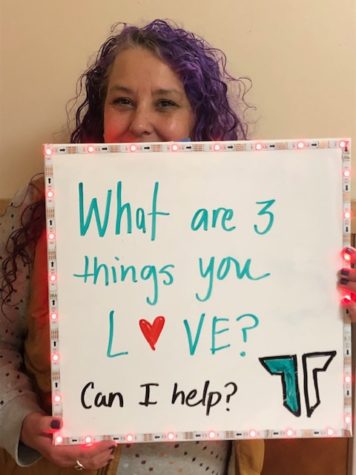Skating through the SBAC
James Canfield skates through the computer lab set up for testing. Canfield made it, juniors, so can you.
April 15, 2018
The next two days will be a grand experiment in having all juniors complete their Smarter Balanced testing at the same time. Almost every computer available to students on campus will be in use so that the school can complete the required, annual round of standardized tests. Besides a new way of testing everyone at once, there is another change to be aware of.
As of publication, less than 1 percent of students chose to opt out of the English and mathematics Smarter Balanced tests this year, a significant decrease from last year’s 11.7 percent for the English test and 15.3 percent for the mathematics test. This drastic change in opt-out rates is possibly correlated to the informational presentation given to all the junior English classes by Associate Principals Andrew Kearl and Angelita Miller. The administration’s hope with this presentation was to help students understand the benefits from taking Smarter Balanced instead of opting out.
If students do participate in Smarter Balanced, then the school looks at the data the scores provide and revises the curriculum based on that data to ensure students are learning the essential target skills. “It measures something different [than the ACT],” Miller said. “This Smarter Balanced test is based on our state standards for education […] and we can narrow down on the standards that students are having the most difficulty with.”
The data becomes more inaccurate when more students opt out and it becomes harder for staff to know what they are doing right and how they could improve. The school’s performance rating is also negatively affected. Secretary Shana Beckman oversees standardized testing at this school and outlined how the opt-out rate impacts the school.
“If students opt out, then the scores and the percentage we get aren’t true,” Beckman said. “Last year we had a lot of IB students opt out, so our rating and percentages went down.”
It is interesting to note students in IB math classes will not take the math portion of the Smarter Balanced test with everyone else. They will take this portion after regular Smarter Balanced testing is done, which will be sometime in mid-May. Because there is still time for these students to opt out, it is unclear if the math opt-outs will increase.
Beckman thinks that the principals’ presentation helped to reduce the opt-out rate. “I’ve heard really positive things so far, from the teachers and students that we talked to, that the presentation was really well done and that it did change their minds as to why they should take it versus not taking it,” Beckman said.
Students may benefit from taking the test. If their essential skills haven’t met with the ACT or SAT, Smarter Balanced is yet another opportunity for students to cover them and not lose an elective senior year to take a workshop class. Also, scoring a three or above on the test will waive a student’s entrance exam for some colleges in Oregon.
Feb. 1 was the deadline for the opt-out but students can still push to opt out if they need to for religious, medical or family reasons. They first need to have an opt-out form filled out by their parents, which can be found online or in the office. Then, the students and the parents need to meet with Miller before anything is finalized. This is slightly stricter than last year, where Miller didn’t talk to the parents, only the students.
Miller also believes the presentation has had a positive impact on keeping the opt-out rate low this year. “Based on the feedback that I got from kids, I think they appreciated that,” Miller said. “They didn’t know what Smarter Balanced was all about before. I think that maybe there was a culture around opting out at this high school.”
While some students don’t really mind the test, others are still anxious to know how the test actually benefits them.
Junior Leah Swanson thinks the Smarter Balanced test will serve as a good way to gain testing experience and she may as well take the test if it isn’t going to hurt her. “I am [taking the Smarter Balanced test] just to experience tests as much as possible so I can get familiar with them,” Swanson said.
Junior Tyler Walker is also taking the test, but doesn’t want her time to be wasted. “The only thing I can see being anywhere close to being worth my time is how it helps me and my education in the future. Whether that be getting more money for the school to promote career jobs in the technical field or if it’s just helping better the education so that the teachers are teaching better even if you’re not in a college level class,” Walker said.
With the low opt out rates this year, the staff will hopefully have the accurate data needed to further strengthen the education at this school.

















